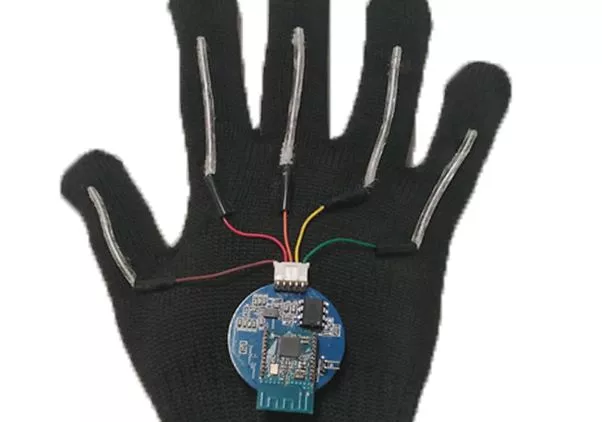Helen Keller once wrote "blindness separates people from things, deafness separates people from people," and there are many technological projects dedicated to breaking down those interpersonal barriers. We've covered a number of motion-tracking gloves designed to translate sign language into audible speech, and a team of bioengineers at UCLA has just come out with another design that's more compact and lightweight than any we've seen previously.
The system takes a pair of gloves and fits them with thin, stretchable electrical yarn sensors running the length of the fingers, capable of tracking your finger movements. These are augmented with adhesive sensors on the user's face, between the eyebrows and on one side of the mouth, to also read the facial expressions that are part of American sign language.
The glove is battery-powered and wireless, and transmits motion data to a smartphone, where an app is capable of translating about a word a second. It currently recognizes about 660 signs, including the entire alphabet and the numbers from 0-9, thanks to a machine learning process assisted by four ASL speakers, who each repeated a list of hand motions 15 times.

The research team states that before this thing is commercialized, it's going to need to learn a lot more words, and translate them a lot quicker. They're not wrong, looking at the fairly unimpressive video demonstration below, which really doesn't look much quicker than typing and is probably less accurate. Still, though we consider this technology embryonic, it's clearly on the way, and it may not be long before sign language speakers can be heard – literally – by everyone.
Source: UCLA





